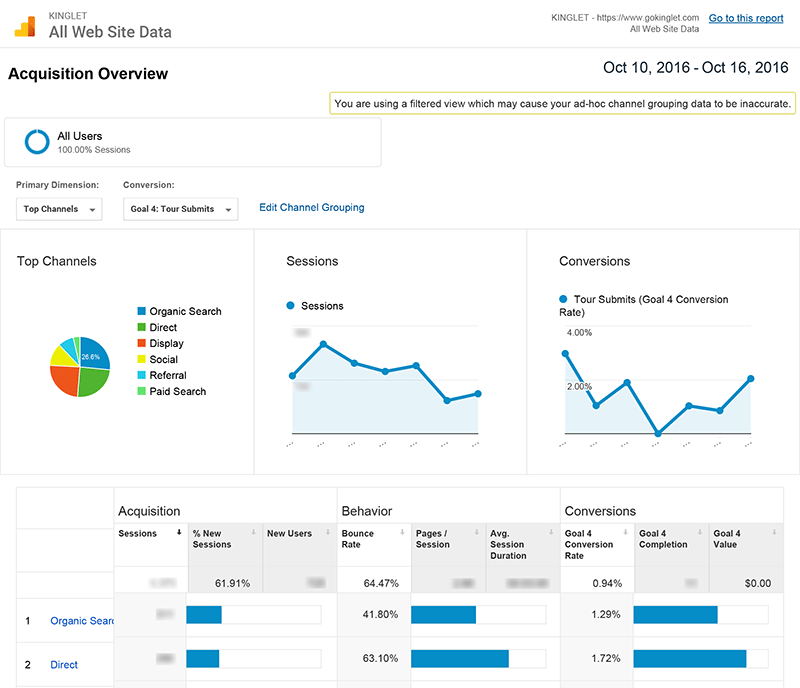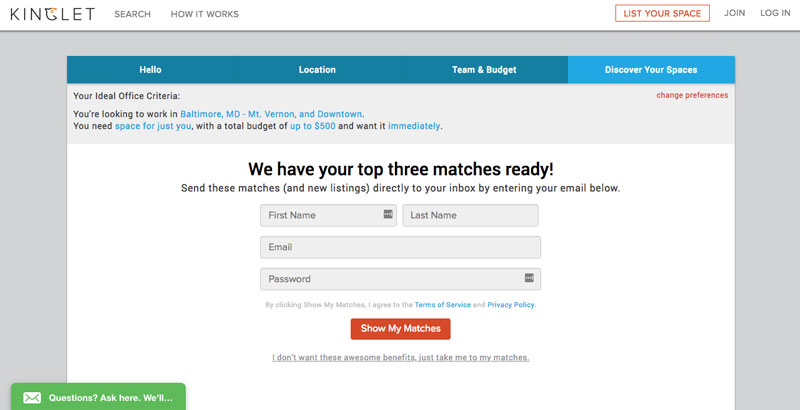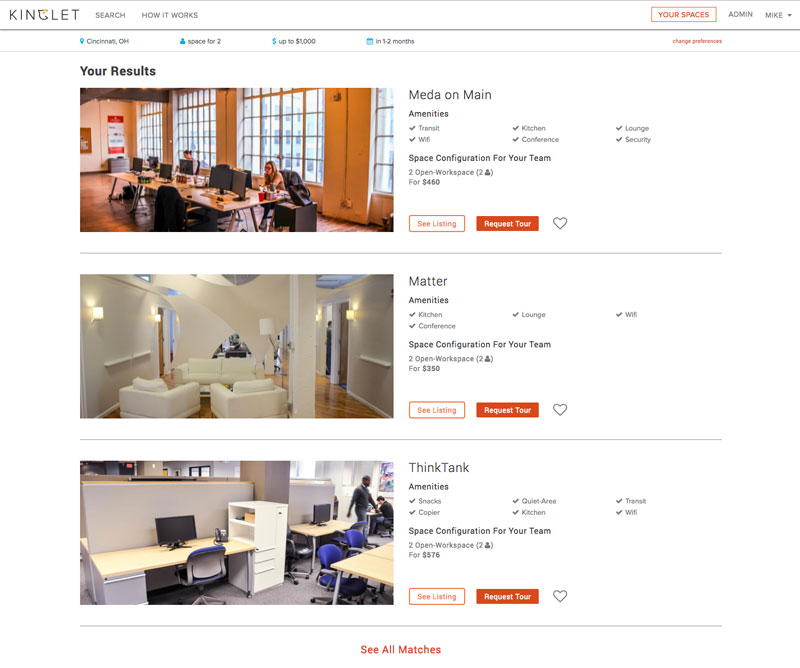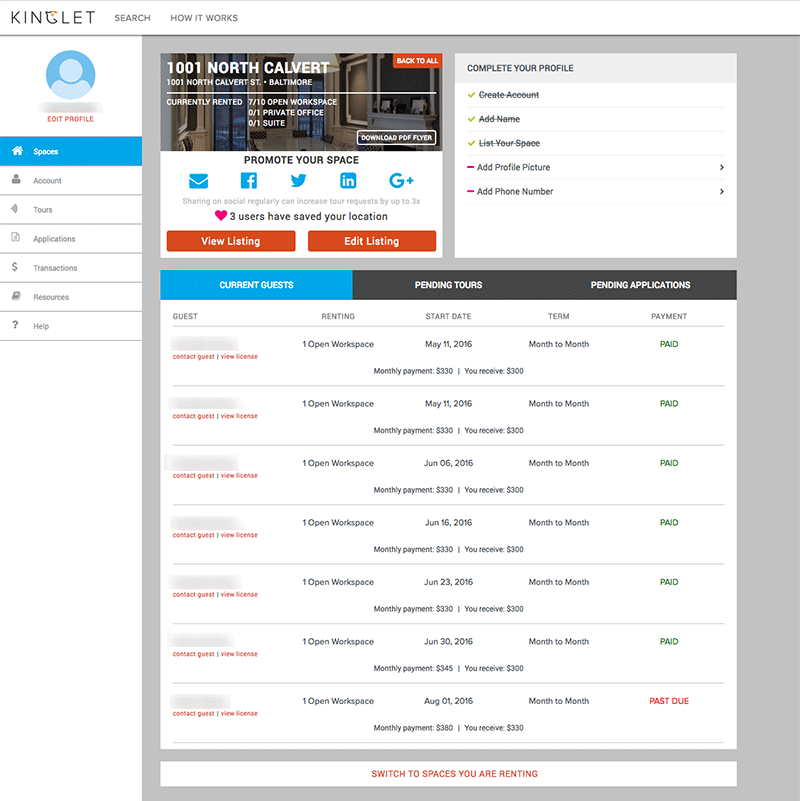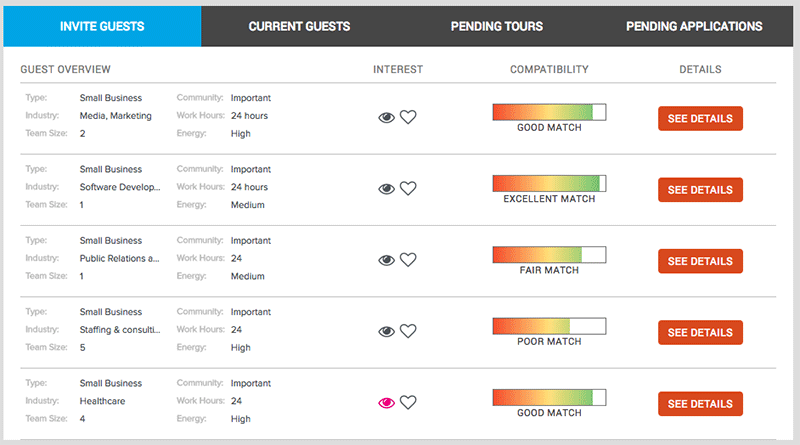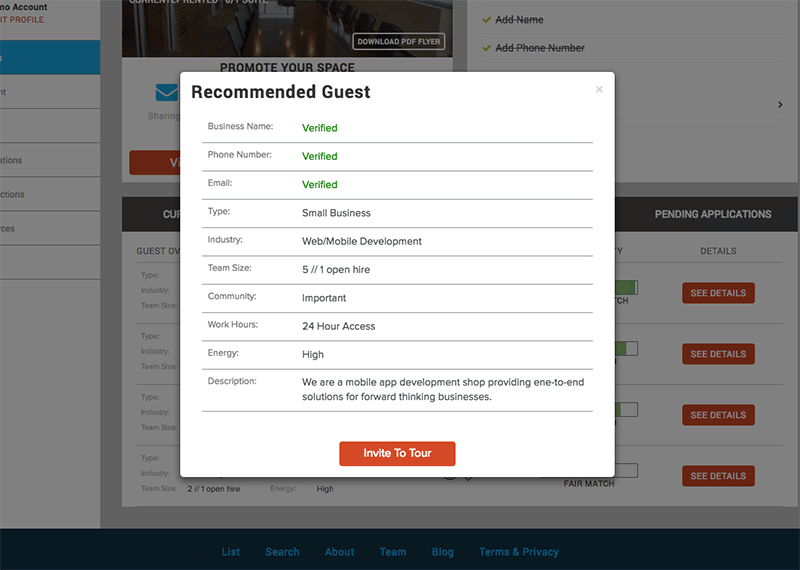Kinglet
Head of Product
Kinglet is the Airbnb of office space. A startup headquartered in Baltimore, MD, the goal of Kinglet is to provide flexible, professional working environments for small businesses and monetize unused space for established companies.
As Head of Product I worked alongside the CEO to drive toward the company vision, executing our strategy, leading the team, and evaluating with qualitative and quantitative data.
Here a few of the key improvements I implemented while at Kinglet:
Talking to Potential Customers
When I first joined Kinglet I educated the team on the importance of being in continual contact with our customers. We discovered that our customers loved us. They had been unable to have the kind of working experience they had wanted prior to what Kinglet offered.
Beyond our current user base we learned that the market was diverse and we needed to focus our efforts on key customers, those with the highest ROI for the investment we were making. High profile hosts and teams of 3 or more.
Analytics Dashboard
None of the interactions on the website were were being tracked outside of home page and map page views.
You can't adjust what you can't see.
I prioritized getting this data. I worked with the engineering team to imbed tracking pixels and created funnels through the site so that we could see where our users were dropping off. I worked with engineering to create an analytics dashboard and we tied this to a daily email with day-over-day and week-over-week trends.
Improved User Onboarding
Through analytics and user testing we discovered that our new visitors were diving in and spending time on the site, but ultimately leaving without Kinglet really understanding who they were or what they were looking for.
I designed and iterated through a better onboarding experience that started with a revamp of the homepage.
Then extended to a three question discovery expereince, followed up with the ability for users to sign up and receive their personalized matches sent directly to their email. This increased sign-ups by 115%, increased tours by 85%, and just as important gave us more visibility into what our visitors were looking for.
If the user signed up they would receive an email link weekly bringing them back to the site with their newest matching spaces.
Updated Listing Dashboard
The increase in new users and sign-ups drove the need to list and manage their properties. We found out quickly that most people never logged into the platform after the initial sign-up. If they needed a change or to manage a tour, they would get in contact with our operations team.
After talking to them we discovered they found the dashboard confusing and non-intuitive. We revamped the Dashboard and got 98% uptick in users signing into the system more than 3 times a month.
In addition, we began interviewing potential guests and confidentially connecting them with the hosts. We got the idea from our favoriting feature, which allowed people to mark host locations for later. With that we gave our hosts the ability to pick tenants that may match with their space to invite them in versus having to wait for them to book a tour.
Goal Based Roadmap
Over the course of the first three months we abandoned our feature based roadmap in favor of a goal-based roadmap. This allowed the small team to be focused on where we were going and analyzing if we were on the right track to get there instead of the next feature in queue.
By being in continual contact with new and existing users and watching the data we were able to pivot to the work that was most important at the time, not the work we thought was the most important.
Product Led Organization
I worked closely with business, engineering, and our designers to keep us aligned, but a few key adjustments helped make that less of a chore.
- I implemented JIRA in order to track work. Even in a 15 person organization this allowed us to see what was being done and have quick conversations about changes in priority.
- I held a Tuesday morning, one-hour, weekly product meeting with the leaders of the company. We went over the customer interviews and user sessions for the week, went over the analytic trends, discussed potential opportunities, and agreed upon forward momentum or a pivot (large or small)
- I sent out a weekly update email every Friday to let the entire company know what was accomplished, any disrupts that occured, and what was on base for the upcoming week
Check out the full site at gokinglet.com


